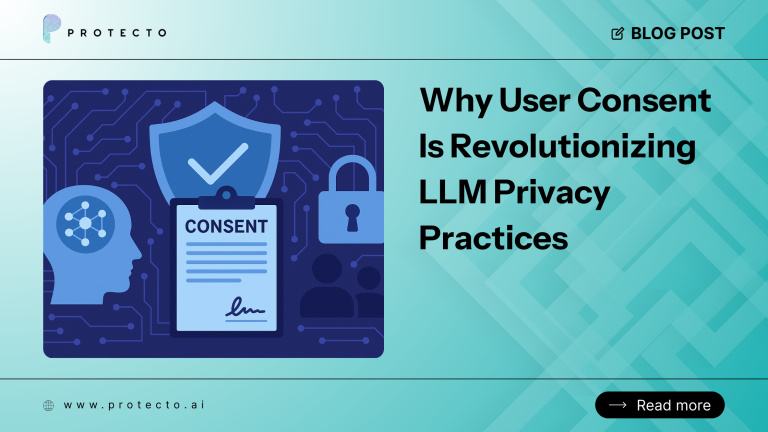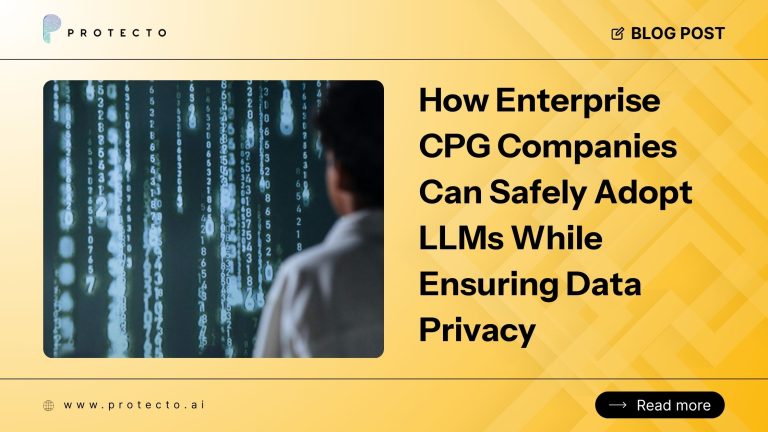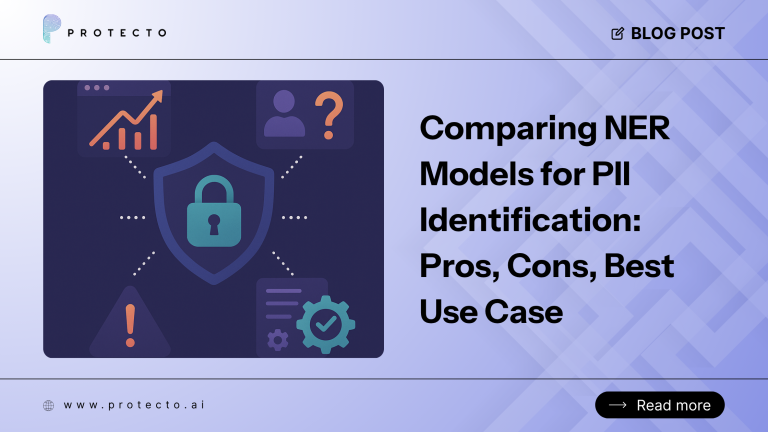API Management is a comprehensive process that involves creating, publishing, documenting, and overseeing application programming interfaces (APIs) in a secure, scalable environment. APIs are the backbone of modern software architecture, enabling interoperability and seamless functionality across diverse applications. They facilitate the integration of different software components, allowing them to intercommunicate and share data efficiently.
Large Language Models (LLMs), such as GPT-4, are advanced AI models designed to understand and generate human-like text. These models are integrated into various applications, including chatbots, content generation tools, and data analysis platforms, enhancing their capabilities and user experiences.
Importance of Security in API Management
With growing cyber threats, securing APIs has become paramount. APIs often handle sensitive data and critical operations, making them prime attack targets. Ensuring secure APIs is essential to protecting data, maintaining service integrity, complying with regulatory standards, and safeguarding both the providers and users of LLM-based services.
Understanding API Security
Key Concepts in API Security
API security encompasses several critical concepts for protecting data and ensuring secure communication between systems. Authentication and authorization are fundamental, verifying the identity of users and granting appropriate access levels. Rate limiting and throttling help control the number of API requests, preventing abuse and ensuring fair usage. Encryption guarantees that data is shielded during transmission, making it unreadable to unauthorized parties. Together, these practices form the backbone of robust API security.
Common Security Threats
APIs face numerous security threats that can compromise data and disrupt services. API key theft occurs when attackers access API keys, allowing unauthorized usage and potential data breaches. Injection attacks, such as SQL injections, involve inserting hostile code into an API request, which can lead to unauthorized data access or manipulation. Man-in-the-middle attacks involve intercepting and altering communication between two parties, often to steal sensitive information. DDoS attacks overwhelm an API with excessive requests, causing service disruptions and potential outages. Addressing these threats requires a combination of robust security measures and continuous monitoring to ensure APIs remain secure against evolving attack vectors.
Challenges in Managing APIs for LLM-Based Services
Specific Security Challenges
LLM-based services face unique security challenges. One significant issue is handling large volumes of requests, which can lead to performance degradation and potential denial of service (DoS) attacks. Guaranteeing data privacy and compliance with regulations like GDPR and CCPA is also critical, as LLMs often process sensitive information. Additionally, adversarial attacks explicitly targeting the model can manipulate outputs or extract confidential data, posing serious security risks.
Operational Challenges
Operational challenges in managing APIs for LLM-based services include scalability, monitoring, and logging. Scaling the API infrastructure to handle increasing requests without compromising security or performance is complex. Effective monitoring and logging of API usage are critical to promptly detect and react to security incidents. Maintaining a balance between robust security measures and optimal performance is a continual challenge, especially as LLMs require significant computational resources.
Another critical operational hurdle is integrating these security practices with existing IT infrastructure without causing disruptions or vulnerabilities. Handling these challenges demands a combination of advanced security technologies and best practices tailored to the specific needs of LLM-based services.
Best Practices for Secure API Management

Implementing Strong Authentication and Authorization
Powerful authentication and authorization mechanisms are crucial for securing APIs. OAuth2.0 and OpenID Connect are widely used frameworks that offer robust solutions for secure access management. OAuth2.0 allows third-party applications to access user data without exposing login credentials, while OpenID Connect extends OAuth2.0 to include user identity verification.
API keys and JWT tokens (JSON Web Tokens) also provide methods for authenticating users and services, assuring that only entrusted entities can interact with the API. Enforcing multi-factor authentication (MFA) adds an extra layer of security, requiring users to provide multiple verification forms before gaining access.
Encryption and Secure Communication
Secure communication between clients and servers protects data integrity and confidentiality. TLS/SSL protocols (Transport Layer Security/Secure Sockets Layer) are essential for encrypting data transmitted over the internet, preventing unauthorized access and tampering. TLS/SSL establishes a secure channel for data exchange, safeguarding sensitive information from interception. End-to-end encryption further enhances security by encrypting data at the source and decrypting it at the destination, ensuring that data remains protected throughout its journey. Implementing encryption at rest, where data is encrypted when stored, adds another layer of security, protecting data from breaches and unauthorized access.
Rate Limiting and Throttling
Rate limiting and throttling are essential for preventing API abuse and ensuring fair usage. Rate limiting is used to control the amount of requests a client can make to an API inside a defined time frame, protecting the API from excessive requests. Throttling goes further by regulating the rate at which requests are processed, ensuring the system remains performant under load.
Tools like API Gateway and Nginx provide built-in rate limiting and throttling features. These features allow developers to set policies that restrict the number of requests based on various parameters, such as IP address or user ID. These measures help maintain the stability and availability of API services.
Input Validation and Sanitization
Input validation and sanitization are critical for preventing injection attacks and ensuring data integrity. Input validation involves checking incoming data against predefined rules to meet expected formats and constraints. This process helps to identify and reject malicious input that could exploit API vulnerabilities. Sanitization involves cleaning and transforming input data to remove potentially harmful content, such as SQL commands or script tags.
Libraries and frameworks like OWASP (Open Web Application Security Project) provide guidelines and tools for implementing robust input validation and sanitization practices. These measures help protect APIs from attacks like SQL injection, cross-site scripting (XSS), and other malicious exploits.
Comprehensive Monitoring and Logging
Comprehensive monitoring and logging are essential for maintaining API security and performance. Real-time monitoring tools like Prometheus and Grafana provide insights into API usage patterns, performance metrics, and potential security threats. These tools help identify anomalies and suspicious activities, enabling swift responses to security incidents.
Logging best practices involve capturing detailed information about API requests and responses, including timestamps, user identities, and IP addresses. Tools like ELK Stack (Elasticsearch, Logstash, Kibana) facilitate efficient log management and analysis, helping developers identify and troubleshoot issues. Implementing robust monitoring and logging practices ensures that APIs remain secure, performant, and reliable.
Advanced Security Measures for LLM-Based Services

Anomaly Detection and Threat Intelligence
Leveraging AI and machine learning (ML) for threat detection is critical in enhancing the security of LLM-based services. These technologies can examine extensive amounts of data to recognize patterns and anomalies suggesting security threats. Anomaly detection systems use statistical models and ML algorithms to detect unusual behavior in API usage, such as unexpected spikes in traffic, abnormal access patterns, or unusual request types.
Integrating threat intelligence feeds provides real-time updates on known threats and vulnerabilities, allowing the system to adapt quickly to new security challenges. Combining AI-driven anomaly detection with threat intelligence ensures a proactive approach to securing LLM-based services.
Zero Trust Architecture for API Security
The Zero Trust model is a strategic direction to cybersecurity that operates on the doctrine of “never trust, always verify.” Implementing Zero Trust for API endpoints involves rigorous authentication and authorization processes, ensuring every request is verified before granting access. This model implements the principle of least privilege, where users and services are given the minimum level of access essential to perform their tasks.
Continuous monitoring and real-time analytics detect and respond to suspicious activities immediately. By segmenting networks and isolating resources, Zero Trust downsizes the attack surface and limits the impact of potential breaches.
API Gateway Security
API gateways play an integral role in managing and securing API traffic. They act as intermediaries between clients and backend services, enforcing security policies and protocols. Configuring security policies in API gateways includes setting up authentication and authorization mechanisms, rate limiting, and input validation. API gateways also facilitate secure communication by enforcing TLS/SSL protocols, ensuring data encryption during transmission.
Moreover, they can integrate with security information and event management (SIEM) systems to provide comprehensive logging and monitoring capabilities. By centralizing security controls, API gateways enhance the security posture of LLM-based services.
Secure Development Lifecycle (SDLC) for APIs
Incorporating security into the API development process is essential for building robust and secure LLM-based services. The Secure Development Lifecycle (SDLC) involves integrating security practices at every stage of the software development process. This begins with defining security requirements during the planning phase and conducting threat modeling to identify potential vulnerabilities.
Code reviews and static analysis tools detect security flaws during development. Automated security testing, including penetration testing and fuzz testing, uncovers weaknesses before deployment. Post-deployment, continuous monitoring, and regular security audits ensure that APIs remain secure against emerging threats.
The SDLC approach emphasizes collaboration between development and security teams, facilitating a culture of security awareness and proactive risk management. By ingraining security into the development process, organizations can lessen the probability of security breaches and ensure the reliability and integrity of their LLM-based services.
Final Thoughts
Secure API management practices are crucial for safeguarding LLM-based services against evolving cyber threats. Organizations must prioritize continuous improvement and vigilance in their security strategies. Emphasizing strong authentication, encryption, monitoring, and advanced security measures like Zero Trust architecture can significantly enhance protection. Merging AI and machine learning for threat detection and response will be essential as cyber threats become more sophisticated.
Protecto offers robust solutions to help organizations implement these best practices, ensuring the secure and efficient operation of LLM-based services. Prioritizing API security is a technical necessity and a strategic imperative for protecting sensitive data and maintaining trust.




